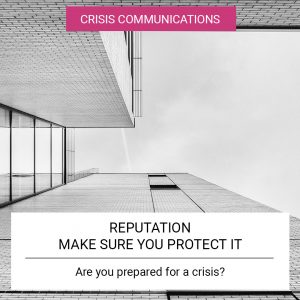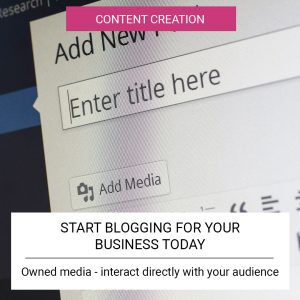
Your most important asset isn’t something you own, it’s something you earn. Reputation. And if you lose it, it could destroy your business.
Regardless of whether you are a professional writer or not, staring at a blank page can still cripple creativity. However, we’re in an age where every organisation should be sharing and creating content. Whilst traditional mass media is still an important arena for reaching your target audience, the evolution of the media landscape has resulted in a huge shift to ‘owned media’. So, if you haven’t started doing this yet – now is the time to roll your sleeves up and get stuck in.
Whilst historically, organisations have always published their own content, this was usually in the form of corporate brochures and videos. There is now a prevalence to be your own broadcaster and publisher, thanks to the development of the internet, introduction of social media and smart devices that make the online world so readily accessible.
However, creating your own regular branded content, is the mother of all blank pages, especially when you’re new to pushing out your own content. Let’s break down how to get going on building an arsenal of worthwhile and valuable content for your organisation to share.
Before you put pen to paper, to really resonate with your target audience, you need to identify the who, what and why of your content. Who is your target audience? What are the key messages you want to get across? And, what are the key objectives? Don’t forget to make these objectives SMART too: specific, measurable, achievable, relevant and time-based.
Now that you’ve identified who you’re communicating to, what you’re saying and what you want to achieve, the next step is to approach creating content in stages. Firstly, there are only two things your target audience wants to know from you to inform their decision: what’s your level of knowledge and how much experience do you have?
To showcase experience, case studies and portfolios are the way forward. Use your previous work to speak for you and show the talents of your organisation. The knowledge part, is the meatier of the two. This is where you and your team will demonstrate your knowledge and expertise through thought leadership articles and easily digestible content presented in multiple formats.
Start by creating a list of what your target audience is interested in that relates to your organisation. Then identify the ones that you feel credible talking about. Add in anything that is currently in the news, and you have a selection of themes you can expand upon.
Have a brainstorming session with your team to come up with ideas of how you can approach each subject. Challenging the status quo, explaining a new approach, or answering popular questions are simple formats for you to demonstrate your knowledge in informative and engaging ways. Finding the types of content that fit with your brand will also help with honing the type of content you publish. Do you want to be known for your fun explainer videos, insightful interviews or your ability to break down complex subjects into digestible infographics?
This article was first published in the Suffolk Free Press, on Thursday 8 August 2019.

Your most important asset isn’t something you own, it’s something you earn. Reputation. And if you lose it, it could destroy your business.

From social media platforms to individual websites with a ‘blog’ element, individuals and businesses alike can directly interact with an audience.

How we manage change can have a huge impact on our future success and growth. Effective communication comes from a strategic approach to change.

Sharing your knowledge and opinions with those that value it will make you a worthy thought leader in your industry.
© 2019-2020 All rights reserved
Knight Media Communications Ltd | Company no. 12064990